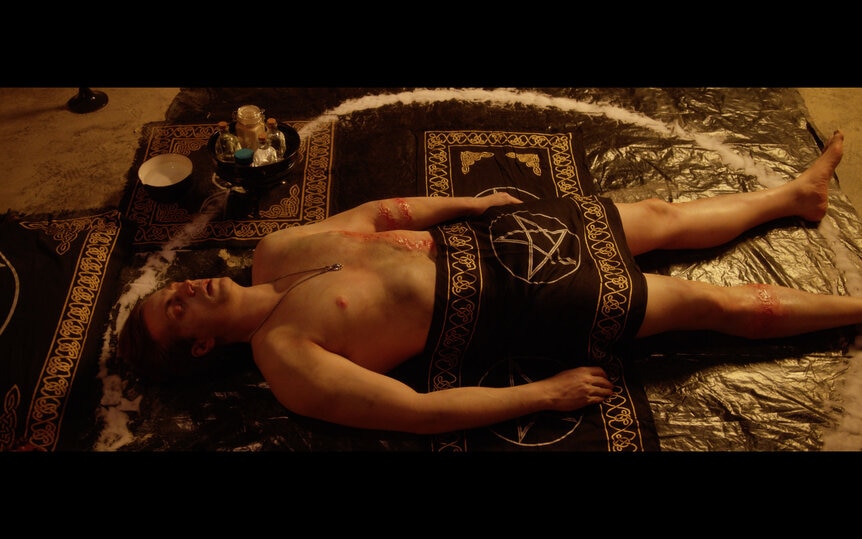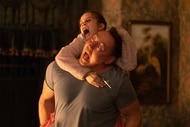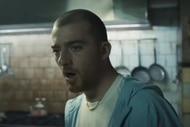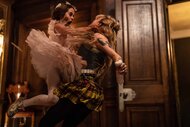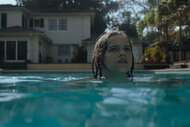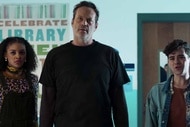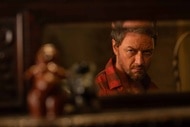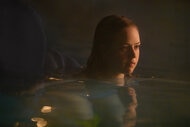Create a free profile to get unlimited access to exclusive videos, sweepstakes, and more!
Geek School: The art of playing dead
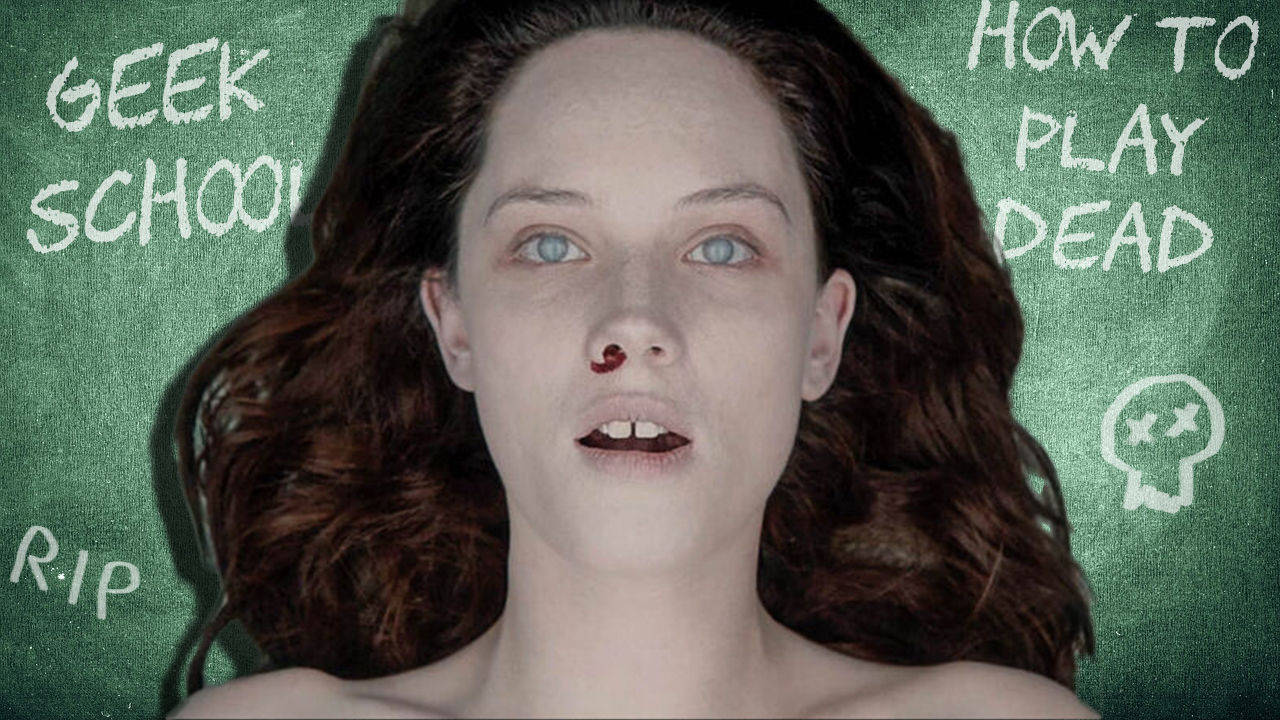
Welcome to Geek School! This SYFY WIRE series provides practical lessons in writing, producing, and selling the nerdy projects of your dreams, with advice from some of the top creators and professionals in the business. In this lesson, we're talking about how to play dead — convincingly.
Horror and sci-fi films, not to mention myriad episodes of the Law & Order franchise, are often littered with the corpses of victims of slasher stalkers, epic battles, and other unfortunate circumstances. Naturally, actors whose characters die have to go limp and convince us they are lifeless. At other times, prosthetic bodies can be used in place of real people, depending upon how ravaged their body is.
The trick is to make sure that the real actors look dead, especially during long takes. It's not as easy as it looks. Let's face it: Plenty of scenes have been marred by a supposedly deceased person… breathing… or twitching.
A good dead performance is something audiences take for granted, but a dicey one can pull them out of the realism of the scene. A great example is a circular pan shot in the entertaining 1972 film Raw Meat (starring Donald Pleasence with an appearance by Christopher Lee) about a cannibal roaming below the London Underground. A deceased man, eyes open, sits against a wall as the camera does a full 360-degree pan around the flesh eater's lair. When the rotating shot finally returns to the victim, he blatantly blinks.
There are aspects of living human behavior that are hard to control, like the twitching of eyelids or the pulsating of an artery. Some tricks can be used to work around these issues, such as specific camera angles, camera movement to show the dead body first before moving onto something else or even trying slow motion to get more out of the take. There are different factors at play.
"It depends on the level of dead we're talking about," notes Jovanka Vukovic, director of Riot Girls and "The Box" segment of XX. "Sometimes you can use a real actor and other times you have to use a dummy. Again, it depends on how you are making them dead. If you're blowing a character's entire head to smithereens then sometimes the most effective camera angle is the one that best captures the details of the f***ing mess flying at the screen."
Not every death is spectacular. Many are tranquil, and there are times that an extended take is needed and an actor must channel their inner corpse. The Method approach would not work here ― you can't actually die for your role ― so you need a good strategy.
One person with experience as a deceased character is filmmaker and actor Matthan Harris (The Inflicted, For We Are Many, the forthcoming Baphomet). He's a pro at death.
"I think the key to believably playing dead on screen is, first of all, to really let your yourself go ― release all tension and energy, and go completely limp," Harris instructs. "Then you'll need to take a deep breath just before the director says 'Action' and hold it for the duration of the shot until you hear 'Cut.' This way, you'll avoid being seen breathing during the take. You don't want to be the corpse whose stomach is clearly moving up and down."
"Actors are usually pretty good at holding their breath, but there are things they can't control like their heart beating," Vukovic says. "I've had to VFX paint out a jugular vein pulsing in a close up of a 'recently deceased person.' If there is an award for dead acting, however, it should go to The Autopsy of Jane Doe's Olwen Katherine Kelly, who played the cadaver. Her shallow breathing was so remarkably subtle it unnerved actors Brian Cox and Emile Hirsch, who sometimes forgot they were not working with a dummy."
Harris adds that if one is playing in a master shot that could run a few minutes long, he advises one to take "the shortest, shallowest breaths possible. It's also helpful to play dead in a position that is comfortable so that it's easier to do it for an extended period of time. However, if the scene requires you to be in a specific position ― such as lying in a specific angle against a wall, or leaning backward while bound on a chair – then you'll just have to make it work."
He notes that it is easier to play dead with one's eyes closed. But if the scene calls for you to keep your eyes open, he offers a special tactic. "It helps to fix your eyes into a 'blind' state, in which you stare off into nothingness until your vision goes blurry," Harris says. "This will prevent you from accidentally looking at something and moving your eyes. I recommend avoiding any caffeine or other stimulants that day, so that your eyelids are completely still during the shots. I love coffee as much as the next guy, but you don't want your closed eyelids to twitch uncontrollably when you're supposed to be stone dead."
Playing dead becomes complicated during the process of "death" itself. "I worked with Munro Chambers on Riot Girls, and I had to run him through with a machete," Vukovic recalls. "He spent a lot of time effortlessly choking, gurgling, gasping, and lying motionless on the ground without blinking. It was his fourth time being killed that year." (As with other businesses, it does help to hire an experienced working stiff.)
Then there is the slow death.
"When we were filming the cannibalism Christmas dinner scene for XX, I had to put Natalie Brown in this wild contraption for hours because too many parts of her body were a special effect that needed to be carved away and partially eaten," Vukovic says. "She was a real trooper. We got through that with a lot of period jokes, patience, and sips of Gatorade."
Towering actor Derek Mears has ratcheted up an impressive resume of characters, including Jason Voorhees and Swamp Thing. He died on ER, got blown up in Pirates of the Caribbean, and got his head bashed in by a rock in The Hills Have Eyes Part II. (Some guys have all the fun.)
Mears will be the first to admit that playing dead can be pretty tough. "The weird thing about it is people think about how reality is from what they've been conditioned to from TV," Mears explained in an earlier interview. "People think that when you die you fall down and close your eyes and you're dead, whereas in reality a lot of times your eyes will be open or your mouth will still be open or you'll be frozen in position or your arms will lock up. It is tough because, depending upon how long the scene is, you're trying to hold your breath or move your stomach minimally. [But] you have to breathe."
He revealed that he has a special "Ninja technique" where he tries to slow his heart rate down so he does not breathe as much. He focuses on relaxing his body as much as possible. It's a simple but effective technique, which can be helpful when many directors have literally instructed him to "play dead" and say nothing further.
"I remember on Cursed, they were shooting a scene above me while I was lying dead on the ground," Mears recalled. "I had to be stuck in the werewolf suit for a long time, and at one point I actually fell asleep. I was there forever, and I remember waking up in the middle of a take and thinking, 'Oh my God! Was I asleep?' I could hear dialogue but couldn't see through the mask at the angle I was at. I didn't move, and I don't think anybody caught on that I was actually asleep."
It looks like Mears stumbled upon the ultimate solution to playing dead: Knock yourself out. Literally.
